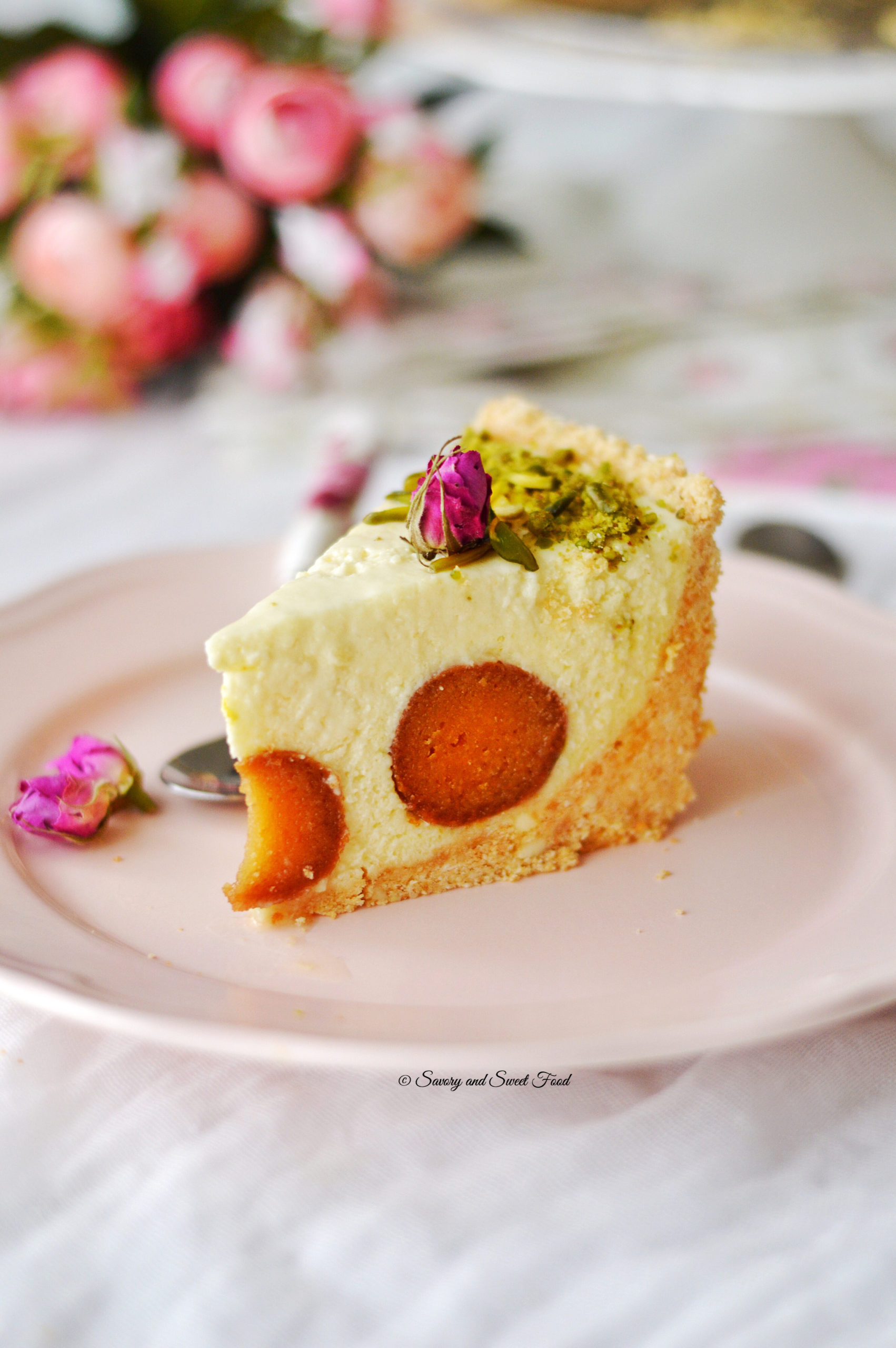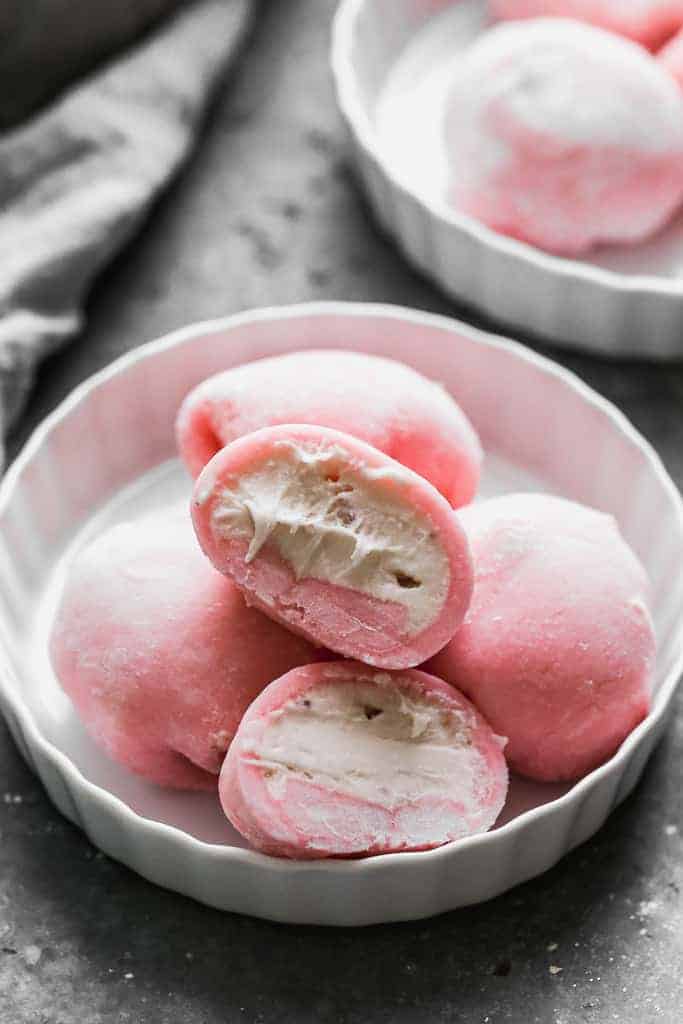I. Introduction: The Sweet Symphony of Global Flavors
Dessert, in its myriad forms, has always been a universal language of celebration, comfort, and indulgence. From the simplest fruit tarts to the most elaborate multi-tiered cakes, sweets hold a cherished place in every culture’s culinary heritage. Yet, in an increasingly interconnected world, the boundaries of traditional cuisine are blurring, giving rise to exciting new culinary innovations. This evolution is particularly evident in the realm of desserts, where chefs and home cooks alike are fearlessly experimenting with flavors, techniques, and ingredients from across the globe.
This phenomenon has given birth to what we now call "fusion desserts." But what exactly defines a fusion dessert? At its core, it is a sweet creation that intentionally combines culinary traditions from two or more distinct cultures. It’s not merely about adding an exotic ingredient to a familiar dish; it’s about a thoughtful and harmonious blending of flavors, textures, and concepts that results in something entirely new, yet often delightfully familiar. Imagine the creamy richness of an Italian tiramisu infused with the earthy bitterness of Japanese matcha, or the comforting sweetness of an Indian gulab jamun reimagined within the structure of a classic American cheesecake. These are the sweet symphonies that fusion desserts compose.
This article will embark on a captivating journey into the world of fusion desserts. We will explore their fascinating origins, tracing how historical and modern cultural exchanges have shaped their development. We will delve into the creative processes behind these innovative treats, examining how chefs artfully blend diverse ingredients, techniques, and concepts. Through iconic examples, we will showcase the delicious possibilities that arise when cultures meet on the plate. Finally, we will consider the broader impact of fusion desserts on global cuisine, celebrating their role in fostering cross-cultural understanding and pushing the boundaries of sweet innovation. Prepare to tantalize your taste buds and discover how these delightful creations are redefining the landscape of modern dessert.
II. The Genesis of Sweet Fusion: A Historical Perspective
The concept of culinary fusion, particularly in desserts, is not a modern invention. While the term "fusion cuisine" gained prominence in the late 20th century, the blending of food traditions has been an ongoing process throughout human history, driven by trade, migration, conquest, and cultural exchange. Sweet fusion, in particular, has a rich and often serendipitous genesis.
A. Ancient Trade Routes and Cultural Exchange
Long before the age of globalization, ancient trade routes like the Silk Road facilitated the exchange of not just goods, but also ideas, technologies, and culinary practices. Ingredients like sugar, spices (cinnamon, cloves, nutmeg), and fruits traveled across continents, influencing local foodways. For instance, the introduction of sugar to Europe from the Middle East revolutionized European confectionery, leading to the development of new sweet treats. Similarly, the movement of people, such as the Arab expansion into Spain, brought with it new ingredients like almonds and citrus, which profoundly impacted Spanish and, subsequently, European dessert traditions. These early exchanges laid the groundwork for the gradual, organic blending of sweet elements from disparate cultures.
B. Colonialism and Culinary Blending
The era of colonialism, while often fraught with exploitation, also inadvertently led to significant culinary blending. European powers introduced their ingredients and cooking methods to colonized lands, and in turn, adopted local ingredients and techniques. This often resulted in hybrid dishes, including desserts, that reflected the complex interactions between colonizers and the colonized. For example, the Portuguese influence in India led to the creation of Goan sweets that incorporate European techniques with local ingredients. Similarly, the Spanish influence in the Philippines introduced ingredients like milk and eggs, which became central to many Filipino desserts, often combined with indigenous ingredients like ube (purple yam) or coconut.
C. Modern Globalization and the Rise of Fusion Cuisine
The late 20th and early 21st centuries have witnessed an unprecedented acceleration of culinary exchange, largely due to modern globalization, increased travel, and the rise of digital communication. Chefs and food enthusiasts are now more exposed than ever to diverse culinary traditions, leading to a deliberate and creative approach to fusion. This era has seen the conscious blending of techniques, ingredients, and concepts from different cuisines to create novel and exciting dishes. The popularity of Asian ingredients in Western desserts, or the incorporation of Latin American flavors into European pastries, are prime examples of this contemporary wave of sweet fusion. This modern movement is characterized by a more intentional and often celebrated effort to combine cultures on the plate, driven by curiosity, creativity, and a desire to offer unique gastronomic experiences.
III. The Art of Blending: Creative Approaches to Fusion Desserts
Creating a successful fusion dessert is more than just throwing disparate ingredients together; it's an art that requires a deep understanding of flavor profiles, textures, and culinary techniques from various traditions. The goal is to create a harmonious and innovative combination that delights the palate and offers a unique experience. There are several creative approaches chefs and home cooks employ to achieve this sweet synergy:
A. Ingredient Fusion
This is perhaps the most straightforward approach, involving the combination of distinct ingredients from different culinary traditions within a single dessert. The magic happens when these ingredients, though from different cultural contexts, find a natural affinity. Classic examples include the pairing of earthy Japanese matcha with the rich creaminess of chocolate, or the unexpected yet delightful combination of sweet dulce de leche from Latin America with the savory umami of Japanese miso. Other popular ingredient fusions might involve tropical fruits like mango or passionfruit with European pastries, or the use of Middle Eastern spices like cardamom or rosewater in Western-style cakes and cookies. The key is to understand how each ingredient contributes to the overall balance of sweetness, acidity, bitterness, and richness.
B. Technique Fusion
Technique fusion involves applying a cooking or baking method from one cuisine to ingredients or concepts from another. This often leads to truly innovative and surprising results. For instance, imagine using classic French pastry techniques, known for their precision and delicate textures, to create desserts infused with bold Asian flavors. A French macaron might be flavored with pandan or black sesame, or a delicate choux pastry might be filled with a yuzu-infused cream. Conversely, traditional Asian steaming techniques could be applied to create lighter, healthier versions of Western puddings. This approach requires a mastery of both techniques and a creative vision to see how they can complement each other.
C. Concept Fusion
Concept fusion takes the idea of blending to a higher level, reimagining entire traditional desserts with a cross-cultural twist. This is where familiar forms take on new identities. A classic American cheesecake, for example, can be transformed into a vibrant Indian-inspired dessert by incorporating flavors like gulab jamun (sweet milk solids) or ras malai (cheese dumplings in sweetened milk). Similarly, the iconic Italian tiramisu can be given a tropical makeover with layers of ladyfingers soaked in coconut milk and infused with mango or passionfruit. The essence of the original dessert remains, but it is reinterpreted through the lens of another culinary tradition, creating a dialogue between cultures on the plate.
D. Balancing Flavors and Textures
The delicate art of creating harmonious and innovative combinations is paramount in fusion desserts. It's not enough to simply combine ingredients; the flavors and textures must complement each other, creating a balanced and exciting experience. A successful fusion dessert often plays with contrasts: a sweet element might be balanced by a hint of acidity or bitterness, a creamy texture might be juxtaposed with a crisp or crunchy component. Understanding the nuances of each culinary tradition involved is crucial to ensure that the fusion feels intentional and cohesive, rather than disjointed. The goal is to create a dessert that tells a story, a delicious narrative of cultural exchange and culinary creativity.
IV. Iconic Examples: A Tour of Popular Fusion Desserts
The theoretical framework of fusion desserts truly comes alive through concrete examples that have captivated palates worldwide. These iconic creations demonstrate how diverse culinary traditions can converge to produce something both familiar and refreshingly new.
A. Matcha Tiramisu: Italian Classic Meets Japanese Green Tea

One of the most elegant and widely recognized fusion desserts is the Matcha Tiramisu. This creation seamlessly blends the beloved Italian coffee-flavored dessert with the earthy, slightly bitter notes of Japanese matcha green tea. In this rendition, the traditional espresso-soaked ladyfingers are replaced or complemented by ladyfingers steeped in strong matcha tea. The mascarpone cream remains, but it often incorporates matcha powder, lending a beautiful pale green hue and a distinctive, nuanced flavor that balances the sweetness and richness. The result is a sophisticated dessert that offers a harmonious interplay of creamy, airy, and subtly bitter notes, appealing to both traditional tiramisu lovers and matcha enthusiasts.
B. Gulab Jamun Cheesecake: Indian Sweet Meets American Dessert

This dessert is a vibrant celebration of flavors, bringing together the rich, syrupy sweetness of Indian gulab jamun with the creamy tang of an American cheesecake. Gulab jamun, a popular Indian sweet made from milk solids, is typically deep-fried and then soaked in a rose- or cardamom-flavored sugar syrup. In the fusion version, these soft, sweet dumplings are often incorporated into or layered within a classic baked or no-bake cheesecake. The gulab jamun can be chopped and mixed into the cheesecake batter, placed as a layer, or even used as a garnish, often drizzled with extra syrup. The combination offers a delightful contrast in textures and a rich, aromatic sweetness that is both comforting and exotic.
C. Mochi Ice Cream: Japanese Mochi Meets Western Ice Cream

Mochi Ice Cream is a playful and popular example of Japanese and Western culinary fusion. It consists of small, spherical balls of ice cream encased in a thin, chewy layer of mochi, a traditional Japanese rice cake made from glutinous rice flour. The mochi provides a unique, slightly elastic texture that contrasts beautifully with the cold, creamy ice cream filling. While the concept originated in Japan, the flavors of ice cream used are often Western-inspired, ranging from vanilla and chocolate to strawberry and green tea. This dessert offers a delightful textural experience and a convenient, bite-sized way to enjoy two distinct culinary elements.
D. Churro Ice Cream Sandwich: Spanish/Mexican Fried Dough Meets American Dessert
This indulgent creation takes the beloved Spanish/Mexican fried dough pastry, the churro, and transforms it into a vehicle for an American classic: ice cream. Instead of being served with chocolate dipping sauce or dusted with cinnamon sugar, two freshly fried, still-warm churros are used as the
buns for an ice cream sandwich. The contrast between the warm, crispy churro and the cold, melting ice cream creates a truly decadent and satisfying experience. This fusion highlights how a traditional street food can be reimagined into a contemporary dessert, blending textures and temperatures in a delightful way.
E. Ube Desserts: Filipino Purple Yam in Various Western Dessert Forms
Ube, a vibrant purple yam native to the Philippines, has taken the dessert world by storm, becoming a star ingredient in countless fusion creations. Its naturally sweet, slightly nutty, and vanilla-like flavor, coupled with its striking color, makes it incredibly versatile. While ube has long been a staple in traditional Filipino desserts like halaya (jam) and kakanin (rice cakes), it is now being incorporated into a wide array of Western dessert forms. You can find ube cheesecakes, ube crinkles, ube tarts, ube ice cream, ube lattes, and even ube croissants. This fusion showcases how a culturally significant ingredient can transcend its traditional boundaries and find new expressions in global patisserie, appealing to a broader audience while celebrating its unique heritage.
F. Kimchi Brownies (or other savory-sweet fusions): Exploring Bolder, More Adventurous Combinations
While many fusion desserts aim for harmonious blends, some push the boundaries further by incorporating unexpected savory elements. Kimchi brownies, though perhaps not for everyone, exemplify this adventurous spirit. The fermented, spicy, and tangy Korean kimchi is finely chopped and folded into a rich chocolate brownie batter. The result is a surprising interplay of sweet and savory, with the kimchi providing a subtle tang and a hint of spice that cuts through the richness of the chocolate. This type of bold fusion challenges conventional notions of dessert and encourages a more experimental approach to flavor combinations. Other examples might include desserts with bacon, rosemary, or even black pepper, demonstrating that the only limit to fusion is culinary imagination.
V. The Impact of Fusion Desserts on Global Cuisine
Fusion desserts are more than just trendy treats; they represent a significant shift in the global culinary landscape, influencing how we perceive and interact with food. Their impact extends beyond the plate, fostering cultural understanding and driving innovation.
A. Breaking Down Culinary Barriers
By combining elements from different culinary traditions, fusion desserts naturally break down perceived barriers between cultures. They introduce diners to new flavors, ingredients, and concepts in a familiar and approachable format. A person trying a matcha tiramisu might be inspired to explore more Japanese teas or Italian desserts, fostering a deeper appreciation for both cultures. This cross-cultural culinary dialogue promotes understanding and celebrates the richness of global diversity, one delicious bite at a time.
B. Innovation and Creativity
Fusion desserts are a testament to the endless possibilities of culinary creativity. They challenge chefs and home cooks to think outside the box, encouraging experimentation with unexpected pairings and novel techniques. This constant push for innovation drives the evolution of dessert making, leading to new methods, flavor combinations, and presentations that might not have emerged within the confines of traditional culinary boundaries. It keeps the dessert world dynamic and exciting, constantly offering fresh experiences.
C. Consumer Appeal
In an increasingly globalized world, consumers are more adventurous and open to new experiences. Fusion desserts cater directly to this evolving palate, offering unique and exciting options that stand out from conventional offerings. They appeal to those seeking novelty, as well as individuals with diverse cultural backgrounds who appreciate seeing their heritage celebrated in new and creative ways. The Instagrammable nature of many visually striking fusion desserts also contributes to their widespread appeal, making them popular subjects for social media sharing and trendsetting.
D. The Role of Social Media and Food Trends
Social media platforms have played a pivotal role in the rapid popularization and dissemination of fusion dessert trends. A visually appealing fusion dessert can quickly go viral, inspiring countless home cooks and professional chefs to recreate or innovate upon it. Food blogs, online communities, and culinary influencers act as powerful conduits, spreading awareness and enthusiasm for these cross-cultural creations. This digital interconnectedness accelerates the pace of culinary evolution, allowing fusion desserts to quickly move from niche creations to widespread phenomena, influencing menus and consumer preferences globally.
VI. The Future of Sweet Innovation: What's Next for Fusion Desserts
The trajectory of fusion desserts suggests a future that is even more dynamic, thoughtful, and responsive to global trends. Several key areas are likely to shape the next wave of sweet innovation.
A. Sustainable and Ethical Sourcing
As consumers become more conscious of the environmental and social impact of their food choices, the demand for sustainably and ethically sourced ingredients will extend to fusion desserts. Chefs will increasingly prioritize ingredients that are locally grown, fair-trade certified, or produced with minimal environmental footprint. This could lead to fusions that highlight indigenous ingredients from various regions, promoting biodiversity and supporting local economies.
B. Health-Conscious Fusion
There's a growing desire for desserts that are both indulgent and mindful of health. The future of fusion desserts will likely see more innovations in creating healthier versions, perhaps by reducing refined sugars, incorporating more whole grains, or utilizing natural sweeteners. This doesn't mean sacrificing flavor, but rather finding creative ways to achieve deliciousness through healthier ingredient combinations and preparation methods. For example, using fruit-based sweeteners from one culture in a dessert from another.
C. Hyper-Regional Fusion
While current fusion often blends broad culinary traditions (e.g., Asian-Western), the future may see a rise in hyper-regional fusion. This involves combining micro-local traditions or ingredients from specific towns, villages, or even neighborhoods. Imagine a dessert that fuses a specific type of cheese from a small French village with a unique fruit from a remote Amazonian community. This level of specificity would celebrate the incredible diversity within broader culinary landscapes.
D. Personalized Desserts
With advancements in technology and a growing demand for customization, personalized fusion desserts could become more prevalent. Consumers might be able to choose specific flavor profiles, cultural influences, and dietary preferences to create bespoke sweet creations. This could involve AI-driven recipe generation or modular dessert components that allow for on-the-spot customization, making every dessert a unique reflection of individual taste.
VII. Conclusion: A World of Sweet Possibilities
Fusion desserts are a vibrant testament to the boundless creativity of the culinary world and the interconnectedness of global cultures. They are more than just culinary trends; they are delicious narratives of exchange, innovation, and appreciation. From the ancient trade routes that first mingled ingredients to the modern digital age that accelerates culinary exchange, the journey of sweet fusion is a continuous evolution.
We have explored how the art of blending ingredients, techniques, and concepts from diverse traditions creates harmonious and often surprising results. Iconic examples like Matcha Tiramisu and Gulab Jamun Cheesecake demonstrate the delightful possibilities when different culinary worlds collide on the plate. These creations not only tantalize our taste buds but also break down cultural barriers, foster innovation, and cater to the adventurous palates of modern consumers.
The future of sweet innovation promises even more exciting developments, driven by sustainability, health consciousness, hyper-regional exploration, and personalization. As we continue to explore and create, fusion desserts will remain a powerful symbol of how food can unite us, celebrating our differences while highlighting our shared love for deliciousness. So, step into the kitchen with an open mind and a curious palate, and let the world of sweet possibilities inspire your next culinary masterpiece. The plate is your canvas, and the global pantry awaits your creative touch.






